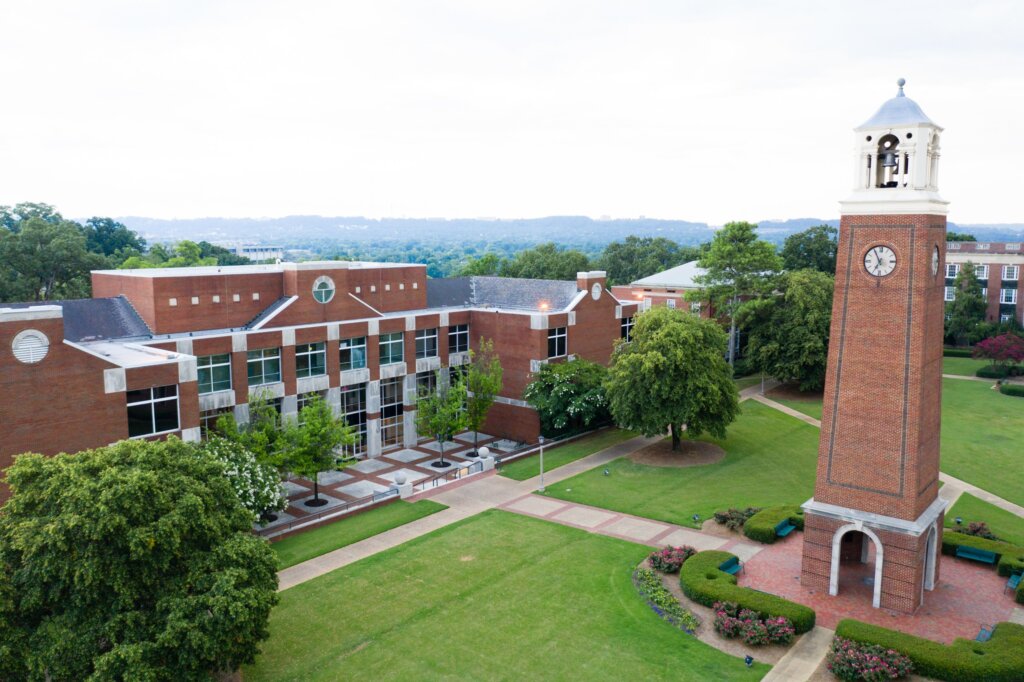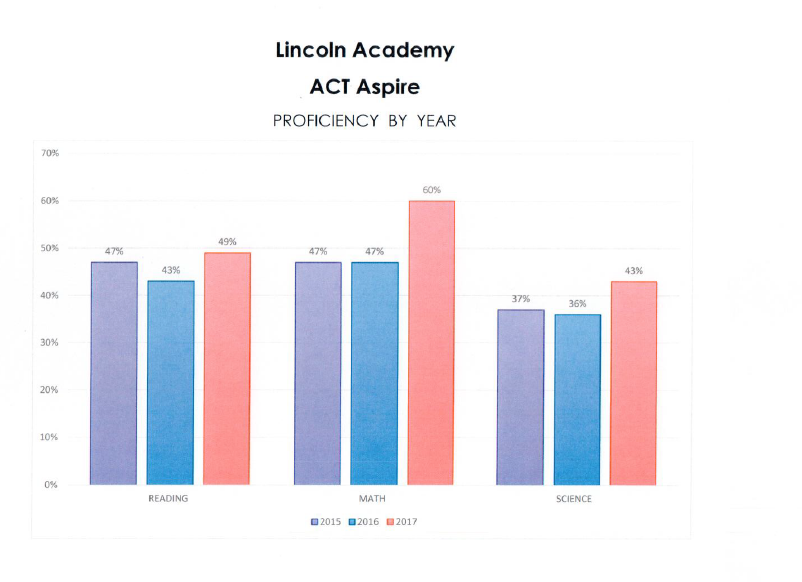
I graduated from college many (many) years ago and only studied science a little. My Bachelor of Arts Degree from the recently embattled Birmingham-Southern College, pictured above, was in Foreign Service with an emphasis on Economics. It was, is, a combination of four minors designed for just one other person before me. Not surprisingly my advisor tried to talk me out of it. The degree was intended to prepare young people for the Foreign Service exam, the entrance test given by the US State Department to prospective foreign service officers. The science requirement for this degree was only one semester, just four months, and I chose Astronomy because someone told me the only math required was plotting the path of the Moon. It was in inauspicious beginning to an interest in science that would become more important.
Later, too much later, I learned that the Foreign Service was only hiring people with native language skills plus usually a Ph.D. So 24 years old at graduation, I had been to Russia, Bulgaria, Czechoslovakia, and Ukraine, and had studied at the State Department, and the UN. I had studied the Russian Language for six years (don’t judge) but could not find a job immediately. It took a long time to accept the fact that the learning was the point, the reason to do it. Not because it would lead to a vocation. In hindsight, I wanted to learn Russian because I didn’t know what else it would teach me.
During a brief attempt at graduate school when I still thought the diplomatic or consular corps might be an option, I wrote a long history paper about the intersection of science and magic. It was such a fascinating period, just before and just after the era known as The Age of Enlightenment. It was when Western people began to become more certain about the world around them. I am hugely oversimplifying the whole thing, but it’s when Western civilization accepted that some questions could be answered by observing, by watching the world around them. Copernicus, an OG Polish thought leader from the 1500s pointed out that the actual position of bodies in the sky matched his plots better when he put the Sun in the middle. It was not just close, it matched exactly and made unnecessary the complex adjustments required to make the current established Ptolemaic version match his observations. It was the kind of perfect symmetry that God would produce in His celestial greatness so Copernicus knew he had it right. It clicked.
There were ancient Greeks who thought the Earth might not be the center of the Universe three thousand years before but they were drowned out by Ptolemy and Aristotle. Those two promoted the Earth-centric version of cosmology and won the day for hundreds of years. The Church liked the idea of Earth in the middle too and banned Copernicus’s ideas. These guys were priests, but they were the original lifelong learners, not content to accept what everyone told them was true when it did not match their careful observations.
Famously Galileo looked through his new lens and saw mountains on the moon. Johannes Kepler noticed that his complex charts tracking the movement of the Sun, stars, and the other celestial bodies worked better if Earth’s orbit was elliptical. If he used an ellipse, his charts perfectly matched his observations. When he figured it out, he could predict where Orion, and Venus, would be months or years ahead. To the people of the time, mostly illiterate except for clergy, knowing where planets are going to be before they get there is magic—big time.
Kepler and Galileo were both priests, they learned from books written long ago and believed those books to be authoritative, the storehouse of all knowledge. They and their colleagues were certain that every answer lay in these writings. If someone had a question, they need only to seek the answer in scripture. But Bread making, beer making, measuring the passage of the Sun and Moon to mark the seasons, masonry, and bridge building all require careful record keeping. Men, mostly, being careful not to waste, making calendars, counting out parcels of goods and grain, all of the machinations of an ordered life. These tasks taught what would later be called chemistry, anatomy, astronomy, and all of that. But in these early days, the work meant cutting things open so you could figure out how the heart worked. People looking into the close, smelly rooms that William Harvey used as a lab might well suspect dark magic. He used stray dogs and other living animals and probably upset all of his neighbors, but he also is recognized as a father of Anatomy.
So I learned about The Enlightenment in High School and College. And since I am from Huntsville AL many of my friends and family work on science-related projects. SLS, Hudson-Alpha, SpaceX, Blue Origin, and lots of companies most people have never heard of have done some amazing science in Huntsville and it’s captivating to watch. Also working with engineers as the CEO of a software company for 20 years exposed me to interesting projects and people. My Sister-in-Law worked at NASA for decades, like her Dad, and was involved in a project that helped test and further prove Einstein’s Theory of Relativity. Another friend worked on Hubble, another on James Webb, another on drones for the British Military, another started a company to clone yeast for craft breweries, so it’s easy to be fascinated. Those SpaceX rockets landing themselves would have truly blown my Father-in-Law’s mind.
I was also part of a Board of Directors for a while that was led by a gifted educator. He talked about Lifelong Learning all the time and I fell in love with the concept. That experience caused me to read books I had not considered reading, then to more, and more. As of March 2024, I am still trying to write a book about my family’s story. Most threads of the line run to Western Europe and at least a dozen came from Ireland, England, Scotland, but also France, and Denmark according to my research and my DNA. One of the 23&Me reports went into detail describing the way the African Diaspora can be tracked through DNA. As humans left Africa they went East, around the Mediterranean, and also across Arabia into present-day Iran and Iraq: The fertile crescent.

One of the coolest discoveries in the last few decades is Ötzi, known as “The Iceman”. He was just a regular guy, walking on a trail in the Alps when he was killed, probably murdered, and left for dead about 3300-3100 BCE. That’s 190 generations go. Iceman’s mom carried mitochondrial DNA that she passed to him and was still detectable in his cells so well preserved were they under the pristine Alpine ice for more than five thousand years. He even had intact blood cells from which researchers were able to extract enough DNA to see that his mtDNA was K1, an ancient marker arising in Western Asia or the Near East about 30,000 years ago. That is interesting but it became even more interesting when I learned that my wife, daughters, and new granddaughter carry the same K1 marker. They are related to Ötzi, he’s their GG(X187)Grandfather! How wild is that? We just went to Switzerland and got within about 200 miles from where he was found. I told Julie she was home!
So, where are the buffalo? Another cool DNA find recently (to me) was the discovery of a buffalo hide wrapped around a Viking! Hair retains the minerals contained in the feed ingested by the animal, all animals, during their lives. So, the hair on a buffalo has material from the grass it ate while it was still alive. Using finely tuned equipment, scientists can measure these materials and understand where in the world these minerals are found. The Viking, a man from Denmark living in Greenland in about 900 CE, was found wrapped in a buffalo hide blanket cut from an animal that must have lived on North America’s broad plains about 2200 miles from the grave. There is so little evidence, we have to infer how that could have happened.
A native American, the Norsemen called them the “Skræling”, must have owned this blanket. He would have traded something valuable for it, maybe seal ivory, with another native American who traded it with someone who must have been as far west as The Dakotas. Maybe the Norseman gave the Skræling something for it, there is evidence for trade. Or maybe he just killed him and took it, there is evidence of that as well. But we do know he valued it enough to be buried in it when he was returned by his clan to the frozen Earth. We will never know very much about 900 BC, much less 5300 BCE, but maybe there is hope that we can know more.
When I was in school, all those years ago, we celebrated Columbus’s “discovery” of the “New World”. We now know there was a settlement 500 years before poor lost Columbus thought he found India.
When I was born, Geologists did not generally accept plate tectonics (!).
So much has been learned since I graduated. If you stop reading, if you stop learning, you will not know that. Worse, you will not know that the world has moved on from your old prejudices. Things you were sure were true, well, it’s not rare for things to change if you take the trouble to look around.


 There is a small community in northeast Huntsville called Lincoln Village. 15 years ago a good friend and pastor started a conversation with a little girl who turned into a commitment and lead to a big project called
There is a small community in northeast Huntsville called Lincoln Village. 15 years ago a good friend and pastor started a conversation with a little girl who turned into a commitment and lead to a big project called 







 When you click Donate to an SGO you see a screen like this:
When you click Donate to an SGO you see a screen like this:



